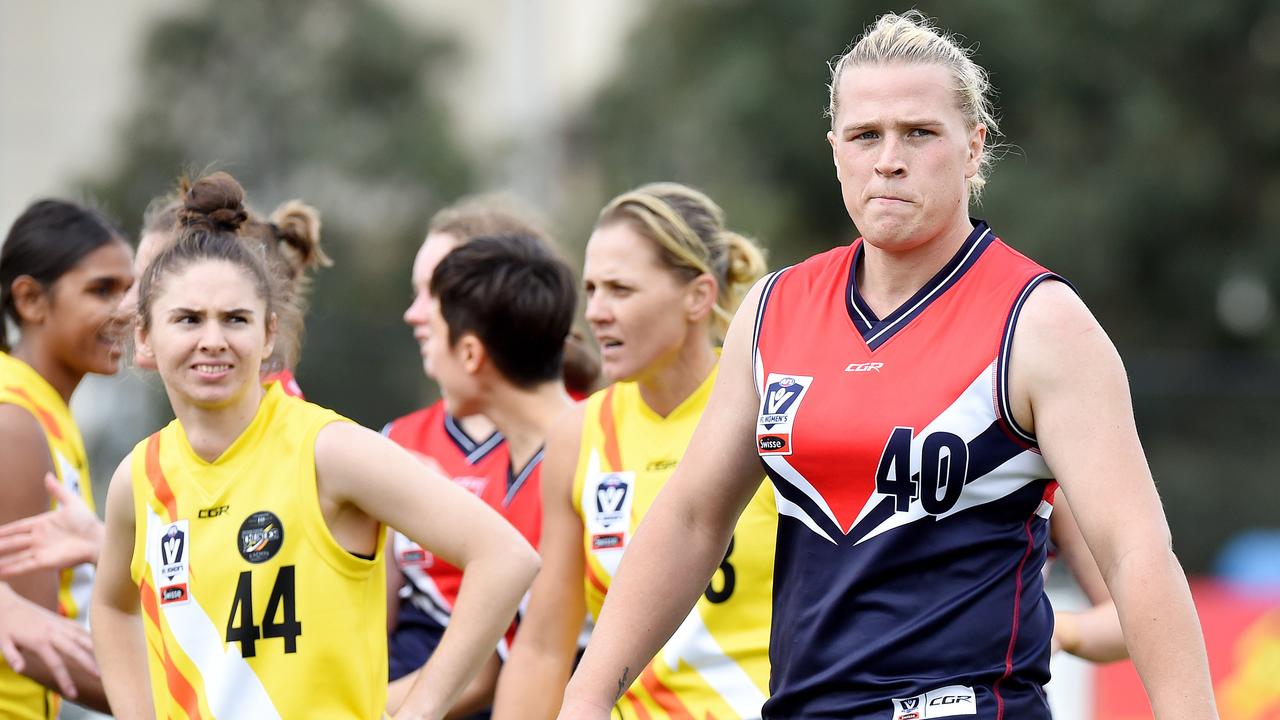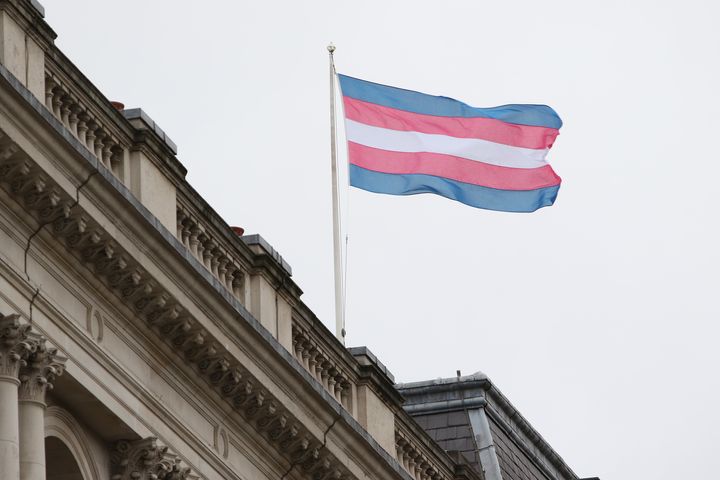Book Review: 'Unsporting' by Linda Blade
"Unsporting: How Trans Activism and Science Denial are Destroying Sport" can serve as prime "peak" material to those still on the fence.

In the gender wars, nothing shows off the complete absurdity of gender ideology than the arena of sports. When hulking 6’ men are put next to female athletes in a weight lifting competition or an MMA cage, the difference is jarring. Even for a non-athlete like me, seeing men stealing trophies and medals from women is infuriating. That’s why Linda Blade’s book Unsporting: How Trans Activism and Science Denial are Destroying Sport (written in collaboration with Barbara Kay) is so important.
The book’s author, Linda Blade is a former Canadian track and field champion and has been working as a sport-performance professional coach in Alberta for over 25 years, helping athletes in over 15 sports reach peak physical performance by teaching them fundamental biomotor skills. With this kind of resume, as well as a PHD in Kinesiology, it’s clear that she has the knowledge and experience to address the issue of transgender athletes in women’s sports.
Right off the bat in her introduction, Blade acknowledges that her book will be deemed "transphobic" by some. But she writes, “So be it. Our cause-the right of female athletes to a level playing field-is too important to remain silent.” A brave stance and one Blade has displayed before she even wrote the book-she’s an active voice on the current hellscape of GC Twitter and she’s done several interviews with GC YouTube accounts including Save Women’s Sports and the Women’s Human Rights Campaign.
In Unsporting, Blade’s stance is clear: men being allowed to identify their way into women’s sporting competitions is unfair, unethical and unsafe.
In chapter one, the very first anecdote she uses to demonstrate this is the infamous 2014 example of Fallon Fox, a transgender MMA fighter who fractured the skull of his female opponent. She also quotes a tweet written by Fox stating how he "love(s) smacking up TERFs (trans exclusionary feminists) in the cage who talk transphobic nonsense. It’s bliss!" Quoting the rampant misogyny of these male athletes is a perfect way of highlighting how anti-woman the gender movement really is.

Blade uses other examples in her book that will no doubt be familiar to radical feminists: how "CeCe" Telfer (born Craig Telfer) ranked 390th in the men’s 400-metre hurdle in NCAA Division 2 in 2017 and then, once he identified his way into the women’s division, became a national champion in 2018. And then there’s the case of "Laurel" Hubbard (born Gavin Hubbard), a male weightlifter who transitioned in his mid-thirties and has been stealing gold medals and first-place spots atop podiums from female athletes ever since.
Blade backs up these examples with plenty of data and statistics. In Chapter Six, she breaks the issue down to its essentials, stating that male athletes are “40% heavier, 15% faster, 30% more powerful, and 25% to 50% stronger than their female counterparts, irrespective of hormonal intervention.”
There are also several charts and graphs that perfectly demonstrate this information, including a chart that illustrates how 15-year old high school boys are capable of beating the world record holder for the women’s 100-metre sprint.
If Blade’s book suffers from anything, it can be summed up in the phrase "a picture is worth a thousand words." It’s one thing to read about male athletes in women’s sports and see statistics that highlight men’s physical advantage over female athletes. It’s another thing entirely to watch a video of CeCe Telfer obliterating his female competitors in the women’s hurdle or to see the famous picture of "Hannah" Mouncey, an Australian man competing in women’s Australian Rules Football.

Blade acknowledges this shortcoming in the introduction and encourages readers to google the names and images of the transgender athletes in order to get a "better sense of what is happening in the context of sports and its impact." In other words, keep your phone handy as you read.
Something Blade is extremely successful with in her book is the way she outlines how we got into this mess.. She mentions the 2015 International Olympic Committee decision to allow athletes to compete in the sport that matched their "gender identity," a decision that was based on a single study of eight trans-identified male long-distance runners. In this study, even the author, a trans-identified male by the name of Joanna Harper acknowledged that "it should be noted that this conclusion only applies to distance running and the author makes no claims as to the equality of performances, pre and post gender transition, in any other sport."
According to Blade, in the very same year, Canada, always one of the first countries to capitulate to gender ideology, began to allow men to identify into the women's sports categories. More recently, she explains, President Joe Biden essentially destroyed Title IX by signing an executive order titled Preventing and Combating Discrimination on the Basis of Gender Identity or Sexual Orientation on his very first day in office.
“If I have a single quibble with Blade’s book, it is that she makes a slight concession to gender ideology when it comes to preferred pronouns.”
It all seems very bleak, but Blade also offers hope—and a way out, at least when it comes to sporting competitions.
In chapter nine, Blade outlines how World Rugby pays heed to the concerns raised by people in the athletic world about men playing against women in a full-contact and potentially dangerous sport. That is why, according to Blade, they decided to review their policies for transgender athletes. Instead of only listening to TRA lobbyists, World Rugby invited advocates and experts from many different fields, including physicians, physiologists, lawyers, trans activists and women’s rights activists.
After hearing from all sides and looking at the evidence, a decision was made: science and common sense won the day and the Executive Council of World Rugby overturned their policy of allowing trans-identified males to play in women’s rugby leagues.
Blade holds this up as an example for how other athletic associations should proceed when they review their policies regarding male athletes in women’s sports. When all voices are allowed to be heard and when decisions are based on scientific evidence, it is clear that gender ideology doesn’t stand a chance.
Just recently, the U.K. Sports Council’s Equality Group (SCEG), after an 18-month process, released a review that stated biological males cannot fairly compete against female athletes due to differences in "strength, stamina, and physique." Ultimately, this is good news for female athletes and exactly the kind of common sense policies that Blade advocates for in her book.
If I have a single quibble with Blade’s book, it is that she makes a slight concession to gender ideology when it comes to preferred pronouns. In the introduction, she explains that "for the purposes of clarity, distinction, and respect," she would denote sex-based pronouns with he/him/his or she/her/hers and would signal a transgender persons "preferred" pronouns with he^/him^/his^ or she^/her^/hers^.
To a radical feminist who is completely over the preferred pronoun nonsense it was a little irritating to read-I found myself translating the preferred pronouns to the correct sex-based pronouns in my head as I read the book.
However, Blade is not the only gender critical author to make such concessions. In her book Irreversible Damage, Abigail Shrier used sex-based pronouns for teen girls struggling with their gender identity and preferred pronouns for adult trans people. While I and other radical feminists might find such concessions annoying and unnecessary, to a person just wading into the gender fracas, it will probably seem like a respectful and fair decision to make. Knowing that we need all the allies we can get and that books like Unsporting should be read as widely as possible, it’s a concession I’m willing to overlook.
Overall, Unsporting is timely, straightforward and will appeal to anyone wanting more in-depth information about the issue of biological males in women’s sports. While a lot of the information will not be new to radical feminists, it can serve as prime "peak" material to those still on the fence and provides lots of information for those wanting to arm themselves with data and scientific evidence in online and in-person debates.
Do you want to bring the "gender madness" to an end? Help us write about it! 4W is able to pay our all-female staff and writers thanks to the generous support of our paid monthly subscribers.
Enter your email below to sign in or become a 4W member and join the conversation.
(Already did this? Try refreshing the page!)





Comments